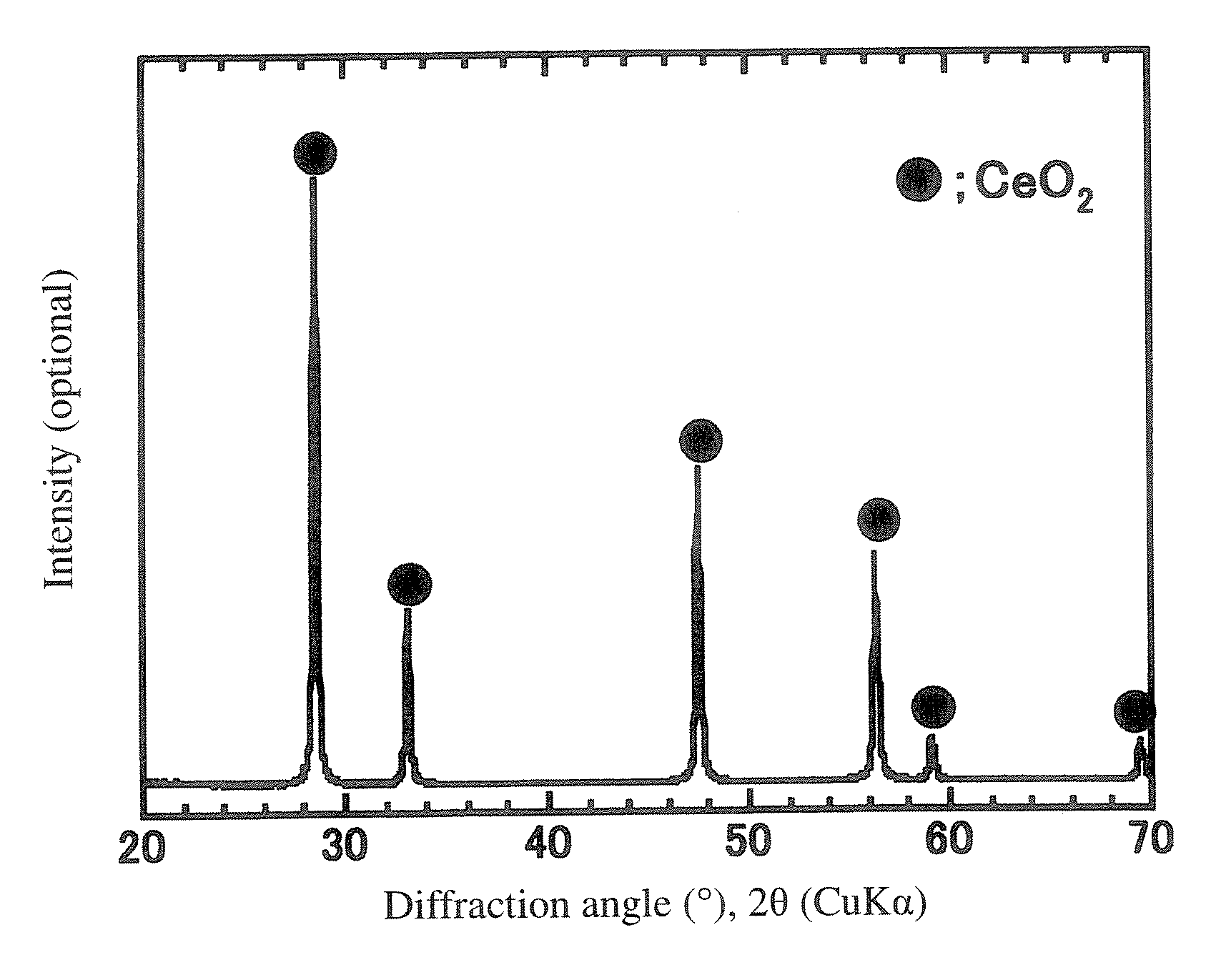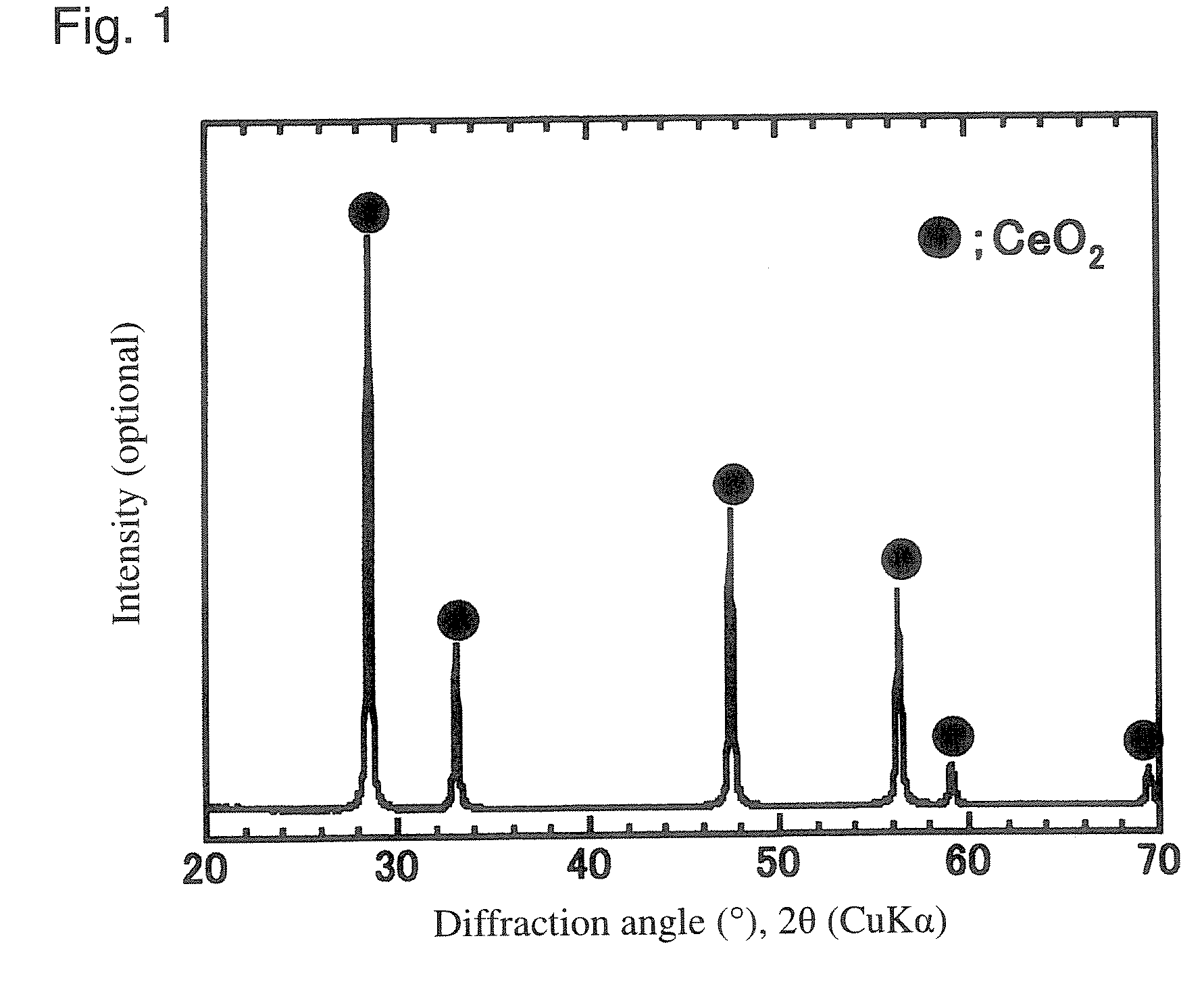Process for producing ceo2 fine particles and polishing slurry containing such fine particles
- Summary
- Abstract
- Description
- Claims
- Application Information
AI Technical Summary
Benefits of technology
Problems solved by technology
Method used
Image
Examples
examples
[0049] Now, the present invention will be described in detail with reference to Examples. However, it should be understood that the present invention is by no means restricted to such specific Examples.
(1) Preparation of CeO2 Fine Particles
examples 1 to 17
[0050] Cerium oxide (CeO2), RCO3 (R=Ba and / or Sr) and boron oxide (B2O3) were weighed in the proportion shown in Table 1 as represented by mol % based on CeO2, RO and B2O3, respectively, a small amount of ethanol was added, and they were mixed and pulverized in an automatic mortar. Then, the mixture was dried to obtain a material powder.
[0051] The obtained material powder was put in a crucible with a nozzle, made of platinum containing 10 mass % of rhodium, and heated in an electric furnace employing molybdenum silicide as a heating element at 1,500° C. for one hour so that the material powder was completely melted.
[0052] Then, the melt was cast while the bottom of the is nozzle was heated in the electric furnace, and made to pass through twin rollers having a diameter of about 15 cm, rotating at 300 rpm to quench the droplets at a level of 1×105° C. / sec to obtain a flaky solid. The obtained flakes were a brownish-red transparent amorphous material. The thickness of the flakes was...
examples 18 to 24
[0057] CeO2 fine particles were obtained in the same manner as in Example 1 except that the chemical composition of the material mixture was changed to the proportion shown in Table 2 and that the flakes were heated at the crystallization temperature shown in Table 2 for 8 hours. The mineral phase of the obtained CeO2 fine particles was identified in the same manner as in Example 1 and as a result, the fine particles were particles with high crystallinity consisting of a CeO2 single phase. Further, the crystallite diameter of the obtained fine particles was measured in the same manner as in Example 1 and as a result, the obtained fine particles had a very small particle size in each Example as is evident from Table 2. Further, an increase of the crystallite diameter along with the increase of the crystallization temperature was confirmed.
TABLE 2ChemicalCrystallizationCrystallitecompositiontemperature (° C.)diameter (nm)Ex.18Same as Ex.567015Ex.19Same as Ex.570024Ex.20Same as Ex.57...
PUM
| Property | Measurement | Unit |
|---|---|---|
| Temperature | aaaaa | aaaaa |
| Fraction | aaaaa | aaaaa |
| Fraction | aaaaa | aaaaa |
Abstract
Description
Claims
Application Information
 Login to View More
Login to View More - R&D
- Intellectual Property
- Life Sciences
- Materials
- Tech Scout
- Unparalleled Data Quality
- Higher Quality Content
- 60% Fewer Hallucinations
Browse by: Latest US Patents, China's latest patents, Technical Efficacy Thesaurus, Application Domain, Technology Topic, Popular Technical Reports.
© 2025 PatSnap. All rights reserved.Legal|Privacy policy|Modern Slavery Act Transparency Statement|Sitemap|About US| Contact US: help@patsnap.com


